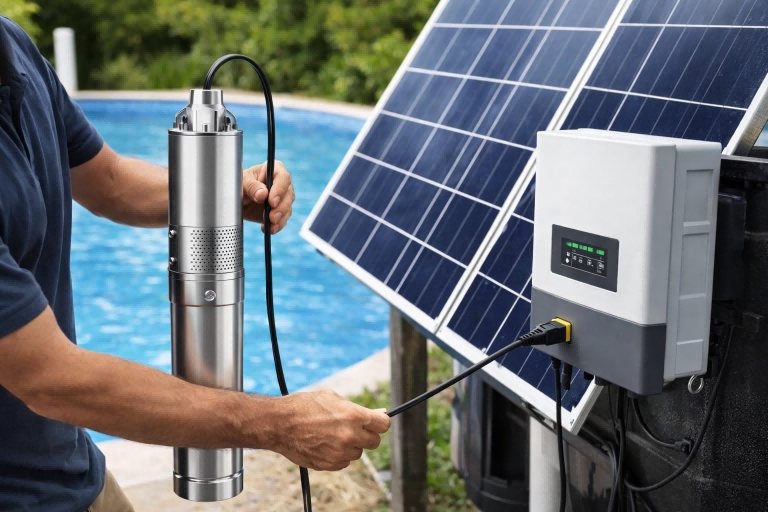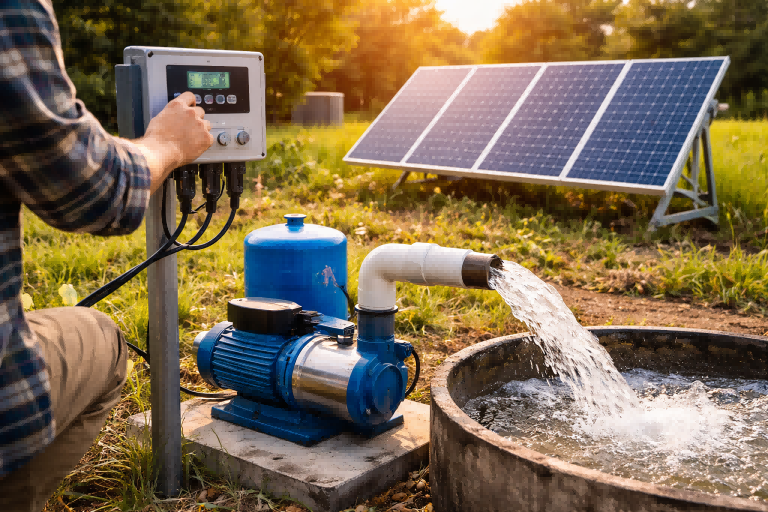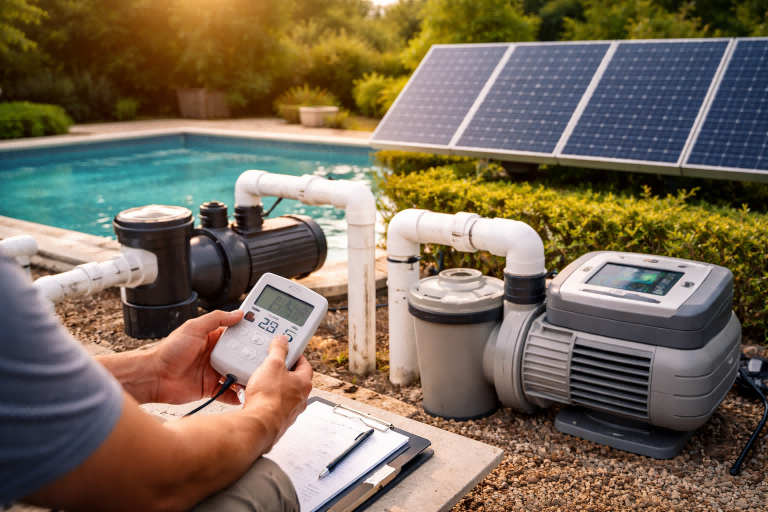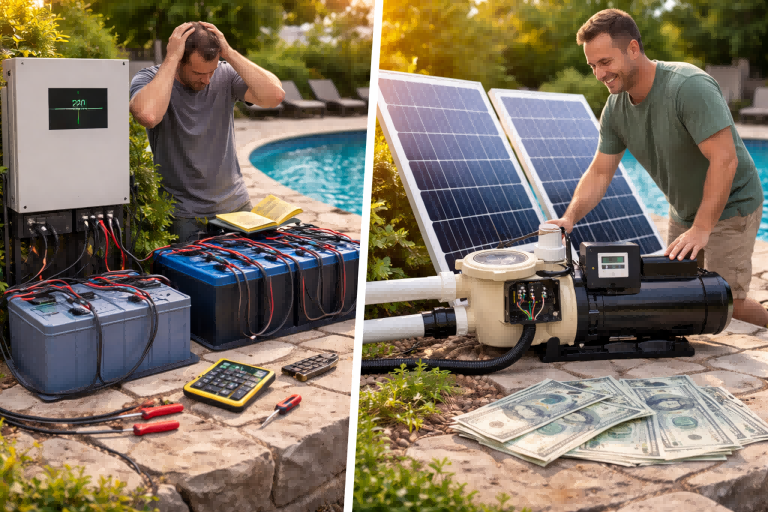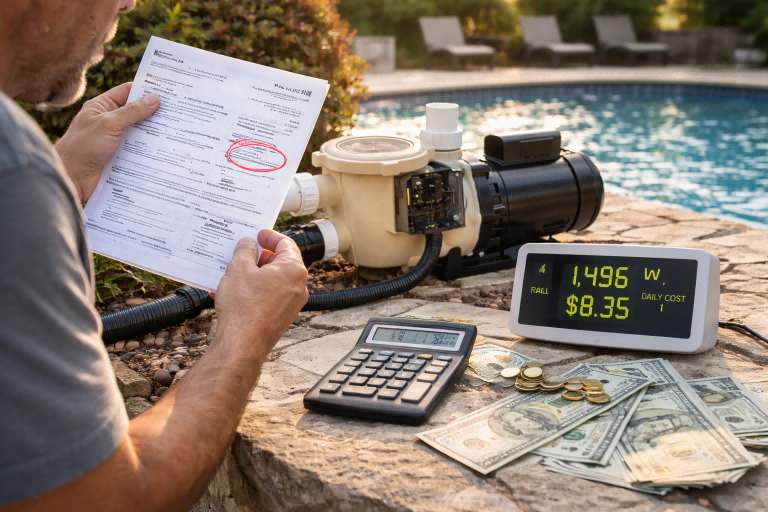Tired of weak, inconsistent water pressure ruining your shower?
This daily frustration points to an outdated system.
An automatic self-priming pump delivers powerful, constant pressure, solving the problem for good.
An automatic self-priming water pump is a smart device capable of evacuating air from its suction line to begin pumping without any manual help [^8]. It intelligently maintains a steady water flow, making it an essential, hassle-free solution for reliable water supply in modern homes and commercial properties.
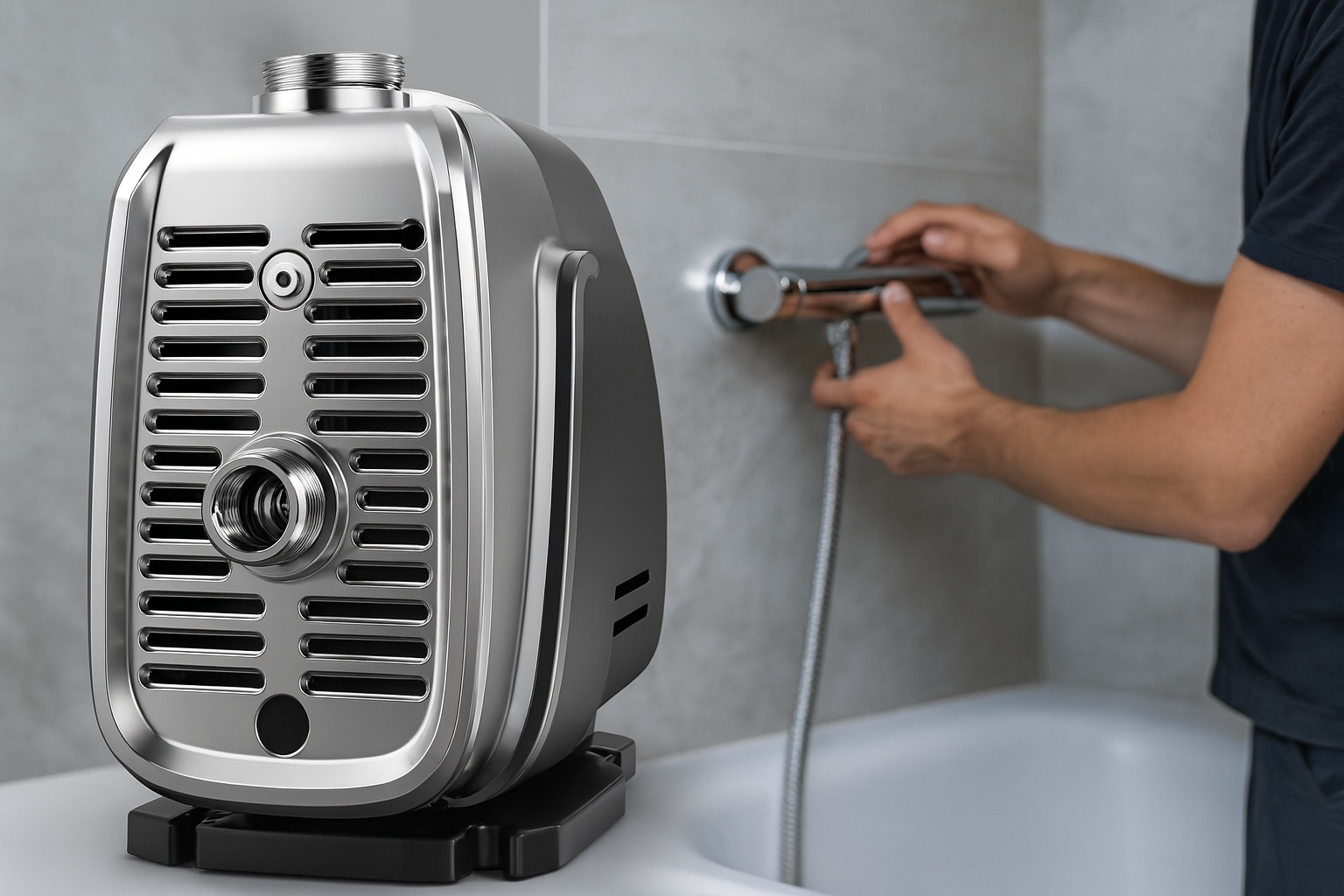
Now that you know the basic definition, you might be wondering what sets these pumps apart from traditional models.
The real innovation lies within their advanced technology and robust design, which work together to provide unmatched performance and reliability.
Let's explore the core features that make these pumps the superior choice for any modern water system.
How Do Modern Self-Priming Pumps Achieve Constant Pressure?
Do you find it annoying when water pressure drops the moment someone else turns on a tap?
This fluctuation disrupts everything from washing dishes to watering the garden.
Intelligent pumps use advanced technology to guarantee steady pressure, ensuring a perfect flow no matter the demand.
These pumps achieve flawless constant pressure by using a Variable Frequency Drive (VFD) paired with a high-efficiency motor [^8]. The VFD dynamically adjusts the motor's speed based on real-time water usage, eliminating the pressure drops common with older, fixed-speed pumps and saving significant energy.
To truly appreciate this technology, we need to look closer at the components that make it possible.
The magic isn't just in one part, but in the seamless integration of several advanced systems.
Understanding this synergy reveals why these pumps are a game-changer for water management.
The Core Engine: Variable Frequency Drives (VFD)
A Variable Frequency Drive is the brain of the pump.
It functions as an intelligent controller for the electric motor.
Instead of running at a single, constant speed, the VFD precisely modulates the frequency of the electrical power supplied to themotor.
When water demand is low, the VFD slows the motor down.
When demand increases, it instantly speeds the motor up.
This real-time adjustment ensures the water pressure at the tap remains perfectly stable.
The Powerhouse: Permanent Magnet Synchronous Motors (PMSM)
Paired with the VFD is a Permanent Magnet Synchronous Motor (PMSM).
These motors are a leap forward in efficiency and design.
Unlike traditional induction motors, they use permanent magnets to create the magnetic field, which reduces energy loss and heat generation.
This results in several key advantages.
- Energy Efficiency: They consume significantly less power than older motor types, leading to lower electricity bills.
- Quiet Operation: The smooth, controlled operation results in incredibly low noise levels, often below 50dB, which is quieter than a library [^8].
- Compact Power: They deliver more power from a smaller, lighter frame, making installation easier.
Key Performance Benefits
The combination of VFD and PMSM technology delivers a user experience that traditional pumps simply cannot match.
The soft start and soft stop function is a critical feature for longevity.
It gradually ramps the motor's speed up and down, which significantly reduces mechanical stress on components and prevents the jarring hydraulic shock known as water hammer [^9].
This thoughtful engineering protects not just the pump but your entire plumbing system.
| Feature | Traditional Fixed-Speed Pump | Modern VFD Pump |
|---|---|---|
| Pressure Stability | Fluctuates with demand | Perfectly constant |
| Energy Consumption | High (always runs at full speed) | Low (adjusts to demand) |
| Noise Level | Loud and noticeable | Ultra-quiet (<50dB) |
| Mechanical Stress | High (abrupt starts/stops) | Low (soft start/stop) |
| Lifespan | Shorter due to wear | Longer due to smart control |
What Makes a Self-Priming Pump Truly Durable?
Are you worried about your pump failing due to moisture, heat, or constant use?
These common issues can lead to costly repairs and inconvenient downtime.
The most reliable pumps are built with premium materials and multiple layers of protection to ensure years of trouble-free service.
True durability is achieved through a combination of superior mechanical engineering and uncompromising electronic protection [^8]. This involves using corrosion-resistant materials like stainless steel for internal parts and completely sealing the electronic controller to make it impervious to moisture, dust, and condensation.
A pump is only as strong as its weakest link.
That's why top-tier manufacturers pay close attention to every single component, from the internal impeller to the outer casing and the delicate electronic controls.
Let's break down the specific features that contribute to a pump's exceptional resilience and long operational life.
Superior Internal Components
The quality of a pump's internal parts directly impacts its performance and lifespan.
Demanding applications require materials that can resist wear and corrosion over many years.
- Corrosion-Resistant Impellers: The impeller is the heart of the pump, responsible for moving water. Using high-grade AISI304 stainless steel or brass ensures it can handle various water qualities without degrading [^8][^14].
- Advanced Stator Design: The stator is a key motor component. High-quality designs use 600-grade silicon steel to boost efficiency and feature Class F insulation wire to withstand high temperatures, ensuring reliable operation under heavy loads [^8].
- Premium Bearings: The use of high-precision bearings from reputable manufacturers is a critical detail. These components lead to quieter operation and a significantly longer service life compared to standard alternatives [^6].
The Ultimate Shield for Electronics
The electronic controller is often the most vulnerable part of a modern pump.
Moisture is the primary enemy of circuit boards.
The most innovative solution to this problem is a technique called PCB potting.
This process involves completely encasing the main controller board in a durable, waterproof potting compound.
This creates a perfect, hermetic seal that delivers several critical benefits.
- Total Environmental Protection: It achieves an IP67 protection rating, making the electronics 100% waterproof and dustproof [^6]. This is designed to prevent up to 95% of moisture-related failures.
- Extended Lifespan: By isolating sensitive electronics from the harsh, humid environment typical for pumps, this feature can extend the controller's life by an estimated 3 to 5 years [^6].
Built for a Tough Environment
A pump must also withstand external challenges.
A robust design considers thermal management and exterior durability.
A well-designed cooling system, often featuring enhanced airflow channels, improves heat dissipation efficiency.
This keeps the motor running at a lower temperature, which directly contributes to a longer, more reliable operational life.
Furthermore, using materials like UV-resistant ABS for the housing ensures the pump can be installed in various locations without degrading from sun exposure.
What Intelligent Features Define a Modern Water Pump?
Is managing your water system a source of constant worry?
Without smart monitoring, you risk undetected leaks, dry running, or damage from power surges.
A modern intelligent pump eliminates this guesswork with automated protections that give you complete peace of mind.
A modern water pump is defined by its comprehensive suite of "smart" protection functions [^8]. These intelligent systems actively monitor operating conditions and automatically safeguard the unit against a wide range of potential faults, including dry running, overheating, voltage issues, and pipeline leaks.
Beyond raw power and durability, the intelligence embedded within a pump is what elevates it from a simple machine to a sophisticated water management solution.
These features not only protect the hardware but also provide valuable insights and convenient control for the user.
Let's explore the key smart functions that make these pumps so reliable and easy to use.
A Comprehensive Suite of Safety Protections
The most advanced pumps feature an extensive set of built-in safeguards, monitoring dozens of parameters in real time.
This ensures the pump can protect itself from virtually any operational hazard.
| Protection Category | Specific Safeguards |
|---|---|
| Electrical & Thermal | Input Over/Under Voltage, Overcurrent, Phase Loss, Stall Protection, Driver Board Overheating, Motor Overheating |
| System & Hydraulic | Water Shortage (Dry Run), Antifreeze Protection, Pipeline Leak Warning |
| Sensor Diagnostics | Fail warnings for pressure, water temperature, and internal temperature sensors |
One of the most critical features is the intelligent dry-run protection.
If the water source runs out, the pump doesn’t just shut off; it enters a smart recovery mode.
It will attempt to self-prime for a set period, then rest before trying again at increasing intervals.
This automatic process prevents damage while conserving energy, and the pump will resume normal operation as soon as water returns.
Intuitive User Interface and Real-Time Monitoring
Despite their internal complexity, these pumps are designed for simple operation.
A clear user interface typically features a few buttons and a series of distinct LED indicators [^9].
- Simple Controls: Users can easily turn the pump on or off, adjust the target pressure, or perform a factory reset with simple button presses.
- At-a-Glance Status: LED lights provide immediate visual feedback on the pump's status, indicating if it's in constant pressure mode, if a leak is detected, or if there's a fault with the power supply.
- Live Data Display: For advanced users or technicians, a long press of a button can cycle the display through critical real-time data, including water temperature, power consumption (in watts), motor speed (in RPM), and input voltage [^9].
Advanced Connectivity and System Integration
The smartest pumps are ready for the future.
Optional WiFi functionality allows for remote monitoring and control via a smartphone app.
This means you can check your pump's status or adjust settings from anywhere in the world.
For larger applications requiring higher flow rates or system redundancy, a Twin Pump Link Mode is an invaluable feature.
This allows two pumps to work together intelligently.
They can operate simultaneously to meet high demand or alternate operation to equalize wear and tear.
Crucially, if one pump fails, the other automatically takes over, ensuring an uninterrupted water supply.
How Do These Pumps Handle Demanding Applications?
Do you need a pump for a challenging scenario, like a hot water system or a location with an unstable power grid?
Standard pumps often fail under these demanding conditions.
High-performance pumps, however, are specifically engineered for versatility and resilience to handle these tough jobs with ease.
These pumps excel in demanding applications due to their high-temperature tolerance and wide voltage adaptability [^11]. They can safely handle hot water up to 75°C, making them ideal for solar heating systems, and operate flawlessly on fluctuating power grids, ensuring consistent performance where others would fail.
The true measure of a pump's quality is its ability to perform reliably outside of perfect, predictable conditions.
Whether it’s dealing with extreme temperatures, poor power quality, or the mechanical stresses of frequent use, a well-engineered pump is built to last.
Let's examine the specific features that give these pumps their impressive operational flexibility.
High-Temperature Capability
Many standard booster pumps are only rated for use with cold water.
However, many modern applications require moving hot water.
Pumps built with high-quality components and superior thermal management can safely handle water temperatures as high as 75°C (167°F) [^11].
This capability makes them the perfect choice for specialized tasks such as:
- Solar Hot Water Systems: Circulating water from solar collectors to a storage tank.
- Hot Water Recirculation: Providing instant hot water at the tap, reducing water waste.
- HVAC Systems: Moving hot water for heating applications in buildings.
Wide Voltage Adaptability
In many regions, the electrical grid can be unstable, with voltage that sags or spikes unpredictably.
This is a major cause of motor burnout in standard appliances.
Advanced VFD pumps are designed with wide voltage adaptability, allowing them to operate perfectly on a broad range of input voltages, typically from 165V to 260V, and on both 50Hz and 60Hz frequencies [^11].
This feature ensures consistent, stable performance and protects the motor from damage, making the pump exceptionally reliable in areas with poor grid infrastructure.
The Importance of a Pressure Tank
Many high-quality VFD pump systems incorporate a small pressure tank.
While the VFD maintains constant pressure, the tank serves a different but equally crucial role.
It acts as a small reservoir of pressurized water.
This allows the system to handle very small water draws—like filling a glass of water or a dripping faucet—without needing to start the pump motor.
By absorbing these minor demands, the pressure tank can reduce pump cycling by as much as 70% [^12].
This simple addition significantly prevents wear on the motor and electrical components, prevents hydraulic shock (water hammer), and contributes to a longer overall system lifespan.
Conclusion
Automatic self-priming VFD pumps represent a major leap in water management technology.
They deliver constant pressure, unmatched durability, and smart, protective features for ultimate reliability and peace of mind.
Frequently Asked Questions (FAQs)
What is the main advantage of a self-priming pump?
Its main advantage is convenience. It automatically removes air and primes itself, eliminating the need for manual intervention, which is ideal for applications where the pump might run dry.
How does an automatic water pump work?
It uses sensors to detect pressure drops in the water line. When a tap is opened, the pressure drops, and the pump automatically starts to restore the set pressure.
What is the difference between a self-priming pump and a normal pump?
A self-priming pump can evacuate air from the suction line on its own. A normal (non-self-priming) centrifugal pump cannot and must be manually filled with water (primed) before it will work.
Do self-priming pumps need to be primed initially?
Yes, most self-priming pumps need to be filled with water once before the first use. After that, their design allows them to retain enough water to re-prime themselves automatically.
Can a self-priming pump run dry?
While they can handle air, they should not run completely dry for extended periods. Modern intelligent pumps have built-in dry-run protection that automatically shuts them off to prevent damage.
How quiet are modern VFD booster pumps?
They are exceptionally quiet. Thanks to advanced motor technology and variable speed control, many models operate at noise levels below 50 decibels, which is quieter than a normal conversation.
How much energy can a VFD booster pump save?
A VFD pump can reduce electricity consumption by up to 50% or more compared to a conventional pump. It saves energy by running the motor only at the speed needed to meet demand.
What maintenance do self-priming pumps require?
They are generally low-maintenance. Regular checks should include inspecting for leaks, ensuring the suction strainer is clean, and verifying that protective features are functioning correctly.


